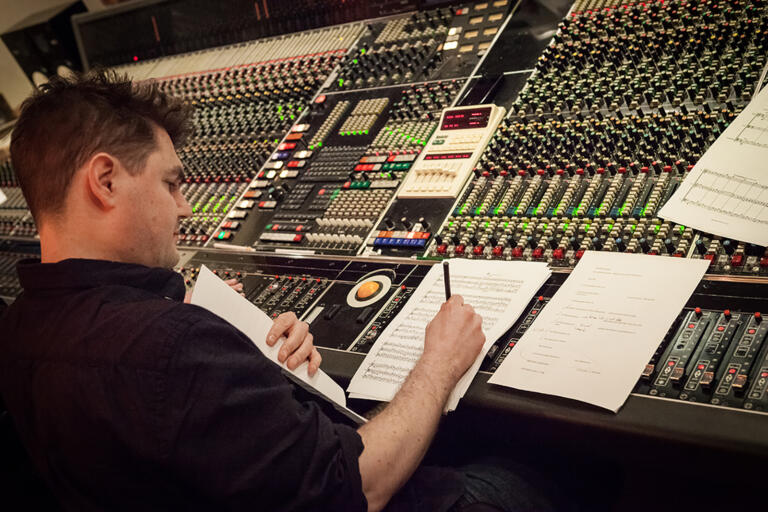Composer & Sound Designer
“When writing music and designing sound for a play, it’s up to me to draw from the text musical themes which can be used to underscore the dialogue, accompany songs and enable the transitions between scenes, as well as to amplify or treat the voice and create literal or imaginary soundscapes.”
Adam Cork
Role
This is two jobs in one. A composer’s work can range from writing songs for musicals to music that underscores plays. They work with a director and, if there are many songs, a Musical Director, writing in a tone and style suitable for the production and the director’s vision.
A Sound Designer will create a ‘soundscape’, which could either be a literal aid to the scenic design or more abstractly represent character and feeling, or fulfil both functions. They also design a sound-system that can deliver all aural aspects of a production evenly to the audience in a performance space, including the composer’s music.
Responsibilities
- Working with the director, designer, Lighting Designer and actors to create a world of music and sound that supports a production, adding to and enhancing the overall effect of the performance
- Reading a script carefully, being aware of music and sound references relevant to the place and period in which it’s set, engaging with the twists and turns of a rehearsal process, orchestrating and recording music for instrumentalists
- If pre-existing music is required, communicating with the producer regarding the acquisition of permissions for use
- Managerial and technical skills – i.e. developing the sound-cue plot, recording and manipulating sound tracks and files, booking studios and organising recording sessions with musicians and sometimes with actors as well
- Communicating with the Production Manager and Stage Manager. Achieving results as thoroughly and as quickly as you can in the sometimes heated atmosphere of the technical rehearsal
Key Skills
Training
Vocational training in Sound Design is available within drama schools. Some people start by doing a broader-based Stage Management/Technical Arts course, learning about different disciplines, then select and specialise in Sound. Work placements and ‘sound op’ing’ in theatres is a good way into the industry. Student and fringe theatre also offer good opportunities to develop skills and establish contacts.
Courses
Other courses are available. Those above represent a sample from various drama schools and universities.
Further Reading
- Theatre Sound by John A Leonard, 2001
- Sound and Music for the Theatre – The Art and Technique of Design by Deena Kaye and James Lebrecht, 2009
- Yamaha Sound Reinforcement Handbook
